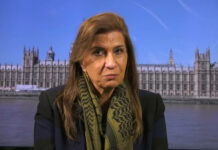 New research shows that four times a month, one in six Americans goes on a drinking binge, knocking back an average of eight alcoholic beverages within a few hours.
New research shows that four times a month, one in six Americans goes on a drinking binge, knocking back an average of eight alcoholic beverages within a few hours.
The findings, based on a survey of 457,677 Americans around the country, show that while binge drinking remains common among the young, it’s also an issue for people well past their 20s. Over all, about 36 percent of binge drinking occurs among people 35 and older, and older people tend to binge-drink more frequently than the young.
For instance, about 13 percent of people between the ages of 45 to 64 say they binge-drink about five times a month, consuming about seven drinks in a sitting. Although only about 4 percent of people 65 and older report regular binge drinking, these older adults drink excessively an average of 5.5 times a month, making the 65-and-over crowd the group that binge-drinks most frequently.
By comparison, 28 percent of young adults 18 to 24 take part in regular binge drinking an average of just four days a month. Young people also drink the most in one sitting, averaging 9.3 drinks, according to the report, from the Centers for Disease Control and Prevention.
“It’s not just the usual suspects who are binge drinking,” said Dr. Robert Brewer, who leads the C.D.C.’s alcohol program. “This is not just a problem of high school kids and college students. It’s a problem across the lifespan.”
Binge drinking is typically defined as five or more drinks on a single occasion for men or four or more drinks on a single occasion for women, generally within about two hours, according to the National Institute on Alcohol Abuse and Alcoholism. This level of drinking would typically raise blood alcohol levels to 0.08 percent and make a person legally impaired to drive.
To a person who drinks several glasses of wine while dining out or during a party with friends, the idea of consuming four or five drinks in an evening may not sound excessive for the circumstances. But Dr. Brewer notes that a large body of evidence shows that drinking at that level is associated with a number of health hazards, including car accidents, injuries, violence and risk of contracting a sexually transmitted disease.
Binge drinkers “tend to do so frequently and tend to drink at levels that far exceed the cut points used to define this behavior,” said Dr. Brewer. “Even if one has some qualms about the definition, what we’re saying is, ‘People are drinking way above that level anyway.’ ”
The latest data were gathered by asking respondents how often they engaged in binge drinking in the past month, and the largest number of drinks they had on any occasion.
Binge drinking was twice as common among men as among women, with 23.2 percent of male respondents admitting to a drinking binge of about nine drinks at a time in the past month, compared with 11.4 percent of women, who reported consuming an average of 5.9 drinks per binge.
Binge drinking prevalence increased with household income. About 20 percent of people who earn $75,000 or more annually reported binge drinking. However, the data showed that people with lower incomes tend to binge more frequently and consume more alcohol per sitting.
Binge drinking was least common in Utah, where just 11 percent of adults reported a binge. It was most common in Wisconsin, where nearly 26 percent of the adult population drinks excessively. Wisconsin binge drinkers also put away the most alcohol, averaging nine drinks per occasion. The frequency of binge drinking was lowest in New Jersey, where the binges happen just 3.6 times a month, and highest in Kentucky, where binges occur 5.9 times a month.
Over all, states with the highest age-adjusted prevalence of adult binge drinking were in the Midwest and New England, and included the District of Columbia, Alaska and Hawaii.
The C.D.C. says that binge drinking accounted for more than half of the 80,000 annual deaths associated with excessive drinking. In 2010, 85 percent of all alcohol-impaired driving arrests or accidents involved people who also reported binge drinking. However, most people who binge-drink are not dependent on alcohol, the agency reports.
Notably, most of the alcohol consumed in the United States is consumed during a binge. Binge drinking accounts for more than half of the alcohol consumed by adults and 90 percent of the alcohol consumed by youths.
{NY Times/Matzav.com Newscenter}












This is non-news. There has been an alcohol problem in the US since WW I. That was what Prohibition was all about (look it up on Wikipedia). England has the same problem. Southern European countries and France go in for wine, which is less powerful than the schnapps like whiskey, gin or vodka that Americans and British like. It’s hard to get really blind drunk on wine, but with whiskey or gin it’s easy.
Our problem is to keep this plague from making any further inroads into our community. Why can our teen-aged bochrim get blind drunk on Purim? Why do people use the open bar at a simchah as an excuse to get bombed? A little bit of schnapps goes a long way. Perhaps if we made schnapps as socially unacceptable as smoking has become, we would make some progress. I have personally seen bochrim so blind drunk on Purim that they were incoherent, passed out, threw up, and exhibited other ways of celebrating.
And alcohol is the premiere “gateway drug” to hard drugs such as heroin and cocaine (which, whether we like to admit it or not)
A Torah Jew who lives with emunah and simchah has no need to get intoxicated, ever, even on Purim. Remember when Jews didn’t drink, and “shikker vi a goy” was an insult?
Oldtimer is 100% right. I would add one more thing though. KIDDUSHIM! It’s not just Purim and Simachas Toyrah anymore. Bochurim and Adults knock back multiple shots – big shots – and then stagger home